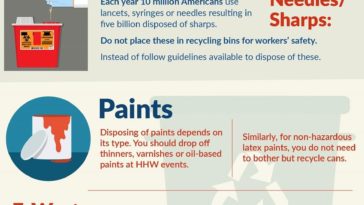Exactly How To Select The Right Dumpster Size For Your Job: A Comprehensive Guide
Exactly How To Select The Right Dumpster Size For Your Job: A Comprehensive Guide
Blog Article
Material By-Templeton Hahn
When starting a task that needs a dumpster, the dimension you pick can greatly impact its performance and cost-effectiveness. Picture having the ideal container that fits all your waste without being exceedingly large or also small. All of it begins with comprehending the nuances of your job and selecting a dumpster size that straightens with your certain needs. So, prior to you choose, take into consideration the factors at play to ensure a smooth waste management procedure throughout.
Variables to Consider
When deciding on the appropriate dumpster dimension, there are a number of vital factors to consider.
Initially, think about the kind of waste you'll be taking care of. Various materials may call for varying amounts of room, so comprehending what you'll be putting in the dumpster is crucial.
Next off, evaluate the amount of waste you anticipate to generate. If mouse click the up coming website page undervalue the volume, you may need to make several trips to throw away everything, which can be troublesome and pricey. On the other hand, leasing a dumpster that's also huge can bring about unnecessary expenses.
Additionally, consider the room where the dumpster will certainly be put. Ensure there's enough area for the dumpster to be provided and grabbed without any obstructions.
Finally, think of any type of weight restrictions that may use. Going beyond the weight limit can result in added costs or perhaps the refusal of service.
Dumpster Size Alternatives
For choosing the ideal dumpster size, it's vital to have a mutual understanding of the available options. Dumpster dimensions usually range from 10 to 40 cubic lawns, with variants in between.
A 10-yard dumpster is suitable for tiny projects like a garage cleanout or a tiny remodelling. If you're dealing with a medium-sized job such as a cooking area remodel or a basement cleanout, a 20-yard dumpster could be the appropriate option.
For larger jobs like a whole-house improvement or commercial construction, a 30 or 40-yard dumpster could be better to fit the volume of waste created.
When picking a dumpster dimension, consider the amount and kind of debris you expect to dispose of. It's much better to pick a slightly larger size if you're unclear to prevent overfilling. Keep in mind, it's even more economical to rent out a dumpster that fits your demands as opposed to having to purchase an extra one.
Matching Size to Project
Ideally matching the dumpster dimension to your job is critical for reliable waste monitoring. To determine Suggested Web page , consider the range and nature of your project.
For little household cleanouts or restorations, a 10-yard dumpster may be enough. trash container rental are generally 12 feet long and can hold about 4 pickup tons of waste.
For https://devinhtdny.thechapblog.com/29829085/essential-tips-for-dumpster-rental-what-you-required-to-be-knowledgeable-about-prior-to-you-set-up like redesigning multiple spaces or clearing out a big estate, a 20-yard dumpster might be better. These are around 22 feet long and can hold around 8 pickup tons.
If you're tackling a major building and construction job or business restoration, a 30-yard dumpster could be the very best fit. These dumpsters have to do with 22 feet long and can accommodate concerning 12 pickup truck tons of particles.
Matching the dumpster dimension to your project ensures you have enough area for all waste materials without overpaying for extra ability.
Verdict
Finally, choosing the ideal dumpster size for your job is vital for effective garbage disposal. By thinking about elements like the type and quantity of waste, area availability, weight constraints, and budget plan restraints, you can ensure you have the ideal dimension dumpster for your demands. Make certain to match the dimension of the dumpster to the extent and nature of your project to stay clear of overspending on unneeded expenses.
